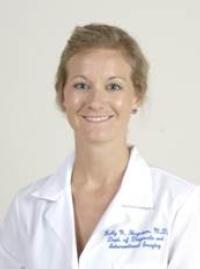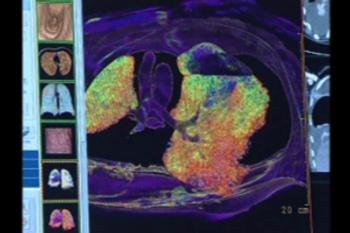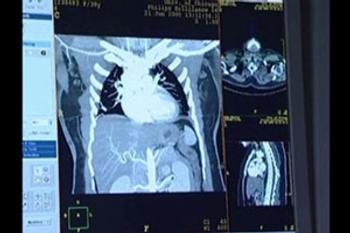New Report Warns of Chest Injuries in Children after ATV Accidents
Released: November 29, 2016
At A Glance
- Chest injuries—including bruised or collapsed lungs and fractured ribs—are common in children involved in ATV accidents.
- Forty percent of children with ATV-related chest injuries in the study required ICU care.
- In 2014, 24,800 children were treated in U.S. emergency rooms for ATV-related injuries.
- RSNA Media Relations
1-630-590-7762
media@rsna.org - Maureen Morley
1-630-590-7754
mmorley@rsna.org - Linda Brooks
1-630-590-7738
lbrooks@rsna.org
CHICAGO — Children in all-terrain vehicle (ATV) accidents are likely to suffer chest injuries, many of them serious, according to a new study presented today at the annual meeting of the Radiological Society of North America (RSNA).
"The sheer incidence of chest injuries in pediatric patients evaluated after ATV accidents is rather alarming and not necessarily the type of injuries patients and their families give much forethought to when considering the risks of ATV use," said study author Kelly N. Hagedorn, M.D., radiology resident at McGovern Medical School at The University of Texas Health Science Center at Houston.
ATVs—motorized vehicles with large, low-pressure tires, designed for off-highway use—have an average weight of 300 to 400 pounds and travel up to 75 miles per hour. ATV-associated injuries can be caused by crashes, rollovers, ejections or even disregard of simple safety precautions.
According to the Consumer Product Safety Commission (CPSC), 24,800 children under the age of 16 were treated in hospital emergency rooms nationwide in 2014 for ATV-related injuries. This figure represents more than a quarter of all ATV-related injuries treated that year. While the American Academy of Pediatrics recommends that children under the age of 16 be prohibited from riding ATVs, regulations vary from state to state.
Dr. Hagedorn and colleagues performed a retrospective review of records from 1992 to 2013 for patients between 0 and 18 years old who underwent chest imaging at Memorial Hermann Red Duke Trauma Institute, a level 1 trauma center in Houston, after ATV-related incidents. During the study period, 455 patients were admitted. Of these, 102 (22 percent) had a chest injury. Patients with chest injuries were the focus of the study.
"While this study only highlights a specific subset of potential injuries, their incidence and clinical significance cannot be overlooked," Dr. Hagedorn said. "Other studies have demonstrated the prevalence of orthopedic and neurologic injuries, and the most recent CPSC report estimates that 23 percent of ATV-related fatalities since 1982 have occurred in children younger than 16."
Main causes of chest injury included rollover (43 percent), collision with landscape (20 percent) or falls (16 percent). The injured child was the driver of the ATV in 41 cases, and the passenger in 33 cases. In the remaining 28 cases, it was unknown whether the injured child was the driver or passenger. Patients with chest injuries were, on average, 13 years old.
The most common chest injury identified in the study was pulmonary contusion, or bruising of the lung, occurring in 61 percent of patients. In pulmonary contusion, blood and other fluids collect in the lung tissue, potentially leading to oxygen deficiency.
Other chest injuries included pneumothorax, or collapsed lung (45 percent of patients), and rib fractures (34 percent of patients).
Forty percent of patients with chest injuries required care in the intensive care unit (ICU), compared to 22 percent of patients without chest injuries. Patients with chest injuries also had longer hospital stays. Eight children with chest injuries died.
"Our study further supports the need for increased public awareness of the risks—and potentially devastating consequences—of ATV use among children," Dr. Hagedorn said.
Co-authors on the study are Jennifer H. Johnston, M.D., Sean K. Johnston, M.D., Nagaramesh Chinapuvvula, M.B.B.S., and Chunyan Cai, Ph.D.
Note: Copies of RSNA 2016 news releases and electronic images will be available online at RSNA.org/press16 beginning Monday, Nov. 28.
RSNA is an association of more than 54,000 radiologists, radiation oncologists, medical physicists and related scientists, promoting excellence in patient care and health care delivery through education, research and technologic innovation. The Society is based in Oak Brook, Ill. (RSNA.org)
Editor's note: The data in these releases may differ from those in the published abstract and those actually presented at the meeting, as researchers continue to update their data right up until the meeting. To ensure you are using the most up-to-date information, please call the RSNA Newsroom at 1-312-791-6610.
For patient-friendly information on chest X-ray and CT, visit RadiologyInfo.org.
Video clips (.mp4 format)

Video 1. Chest CT - Multiple 3-D views of the chest, beginning with the skin and gradually removing layers to show the spine, are displayed.
Download.mp4
(Right-click and Save As)


